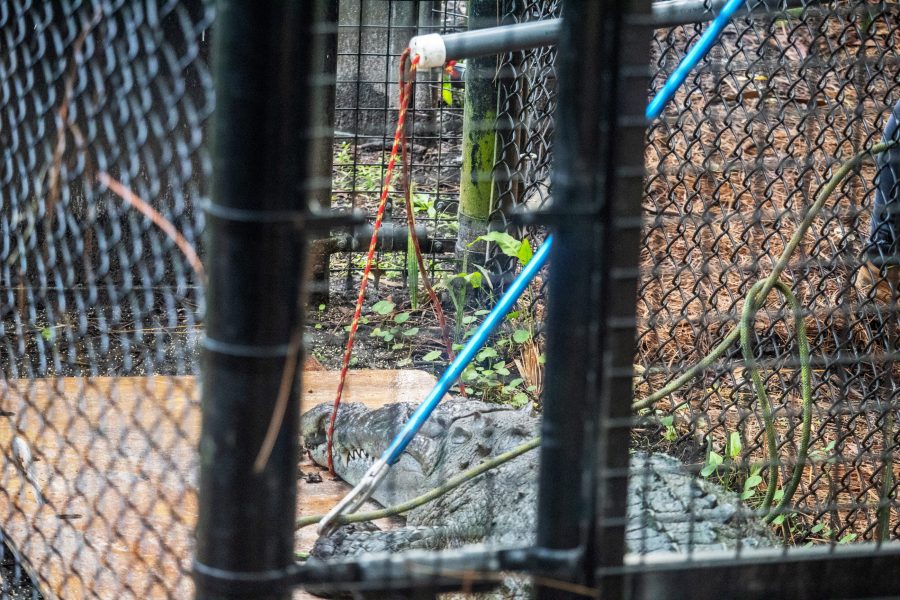

It was check-up time for Lilly the American crocodile recently! It’s important to us to ensure all our animals are thriving with us, making regular check-ups of our animal residents important.
As you might imagine, examining a 295-pound crocodile comes with A LOT of safety requirements and training – but the training actually also involves Lilly! By working with our animal residents on voluntarily participating in their healthcare, we make the process less stressful for everyone involved.
Lilly knows how to target, or touch her nose to a marker, making it easier for our Herps & Aquatics animal care team to move her to different areas of her habitat.
“All of the behaviors that we used for the exam are all based off of the basic target behavior that she has been proficient in for many years” said area supervisor Jenna. “So, in reality, this is years of prep work!”
She also knows how to shift into a special secure area for examinations, step onto a weight scale, and stay still for injections.
Still, once these examinations were scheduled, there were a few extra elements for Lilly to experience ahead of time. Lilly went into daily training ahead of the exam, with new elements added to each session. Days before her exam, she entered her “shift,” or area for the exam and first saw a new-to-her board crafted to help restrain her. She even walked into the ropes used to secure her and allowed her care team to fully tighten the jaw rope the first time she experienced them. Our veterinary staff also got involved in the prep work, with a saline practice injection before the real thing.
“We do so much training with her and have built up a lot of trust, so we were able to accomplish new behaviors quickly,” said Curator of Animals Nicole Payne.
Everything is done with positive reinforcement, so Lilly received tasty snacks for participating in training. Her care team was careful to watch and read her body language very closely, and they proceeded only when she was calm and comfortable.
For the actual exam, Lilly participated in moving into her exam space and being restrained. After she was sedated, our care team also physically restrained her as a precaution for our veterinary team.
Aside from safety, there are a few things about crocodilians that make them unique to examine, according to our staff veterinarian Dr. Rachel Turner. Reptiles tend to process drugs slowly, so it can take them longer to be sedated – and to wake up – than a mammal or bird.
The size and anatomy of crocodiles can also make it hard to monitor them while they are sedated. With a smaller animal, you can just use a stethoscope on them or hook them up to an ECG. With big crocodilians, it can be hard to get standard monitoring equipment to read appropriately.
In addition to a physical exam and bloodwork, our veterinary team took some radiographs of Lilly’s front limbs. She sometimes walks oddly on them. Radiographs in 2023 showed some evidence of arthritis, so our team wanted to monitor the changes.
While we’re still waiting for the results of Lilly’s bloodwork and radiographs, the exam itself didn’t find anything abnormal! We’re so proud of our animal care and veterinary teams for their hard work to make this exam as stress free as possible for Lilly – and for giving her incredible healthcare!